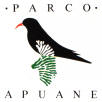|
|
||||
|
|
|
Voyage en Tunisie
Cooperation projects towards the first Tunisian Geopark 12th-16th February 2014 |
||
|
|
||||
|
|
The Apuan
Alps Geopark as incubator of a possible Geopark in Tataouine (southern
Tunisia) within international cooperation projects to be developed through
Non-Governmental Organizations (NGOs). This is the mission that has been
outlined by the Director Dr. Antonio Bartelletti and Dr. Giuseppe Ottria,
member of the Scientific Committee, throughout their voyage at the northern
boundary of the Sahara during the week 12th-16th February 2014. |
|||
|
|
PHOTO CHRONICLE |
|||
|
|
||||
|
|
 |
wednesday
12th february 2014 |
||
|
|
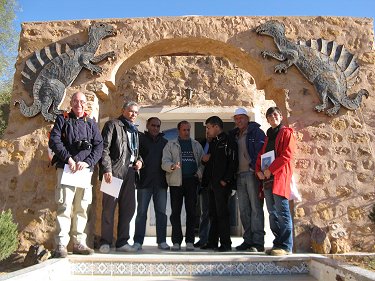 |
thursday
13th february 2014 |
||
|
|
 |
The museum contains the remnants of a large sauropod dinosaur, the Tataouinea hannibalis which lived in the Early Cretaceous, here recreated in a reduced size. |
||
|
|
 |
On the nearby hill it is easy to find the most common fossils of molluscs and echinoderms of the Late Jurassic period. |
||
|
|
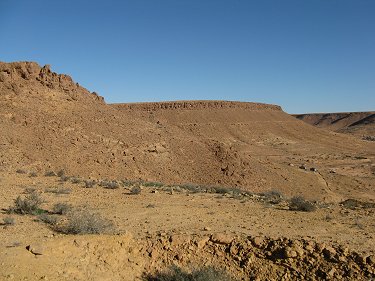 |
The landscape around Tataouine is typical of the rocky deserts (the hammada), with large limestone plateaus covering, with horizontal layers, the Sahara craton.
|
||
|
|
 |
The man of the rocks (our geologist Giuseppe Ottria) near a layer more resistant to erosion. |
||
|
|
 |
The Director Bartelletti is sheltering from the sun under a curious rock shaped by wind.
|
||
|
|
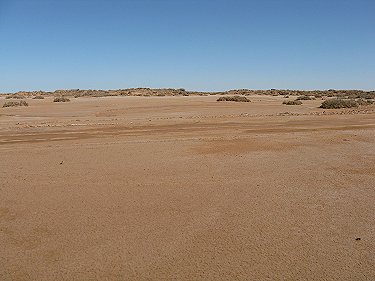 |
The intermittent waterways, wadi, merge into a tectonic depression to the north-east of Tataouine. We are at the center of an endorheic basin, sabkha, where the wind deflation prevents its filling. |
||
|
|
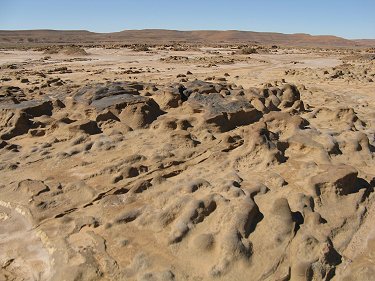 |
The modeling by wind and running waters produced these unusual “mammillary” landforms.
|
||
|
|
 |
In the same tectonic depression, the edge of a normal fault emerges from a bed of sand rich in sodium chloride. |
||
 |
In the tectonic depression, temporary lakes or ponds can form, displaying a fair amount of water especially during winter. |
|||
 |
The desert is not only rocks, stones and sand, but also unusual and ephemeral flowers... |
|||
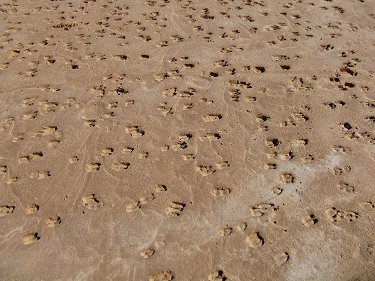 |
The footprints on sand indicate the presence of sheep grazing on land of collective ownership. |
|||
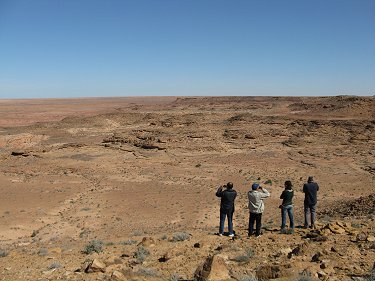 |
From a hilltop, overlooking the lunar landscape of sabkha, where the strong salinity limits the development of vegetation. |
|||
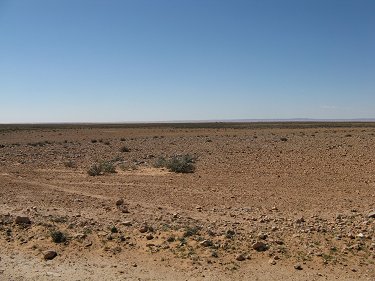 |
The desert of Tataoine approaching the coast of Djerba is even more arid and rocky. On the background the Libyan border. |
|||
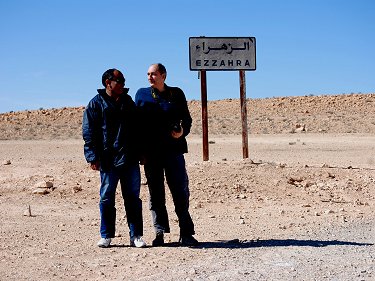 |
A souvenir photo to emphasize the friendship between the two shores of the Mediterranean. |
|||
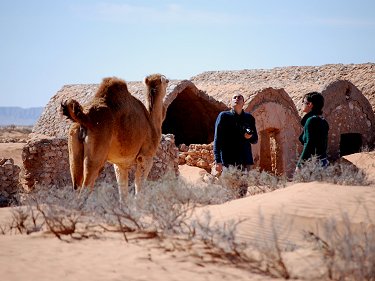 |
An instinctive understanding establishes between man and dromedary in the sand dunes which progressively move, turning areas that once were cultivated into a desert. |
|||
 |
The date palm cultivation on the gravel bed of a wadi, where the tree roots can more easily intercept the water. |
|||
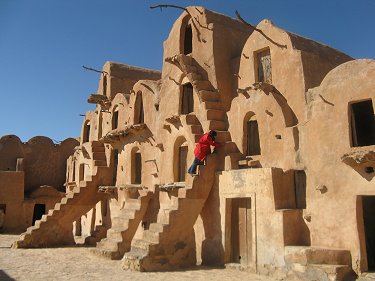 |
The fully restored Ksur ("collective granary") Ouled Soltane ("of
the Sultan’s sons").
|
|||
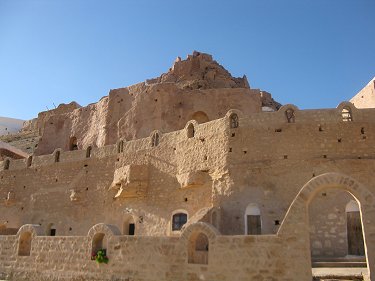 |
Kalâa (fortress) at Duoiret, overlooking the village partly converted into a “maison d’hotel”, respecting the traditional architecture. |
|||
 |
The hotel, partly dug into the mountain, offers the opportunity
to sleep in very characteristic cave rooms. |
|||
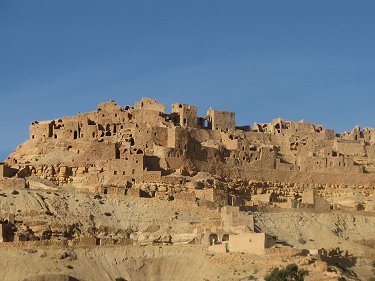 |
Cave dwellings of Berber tradition along the sides of the fortified hill of Chénini village.
|
|||
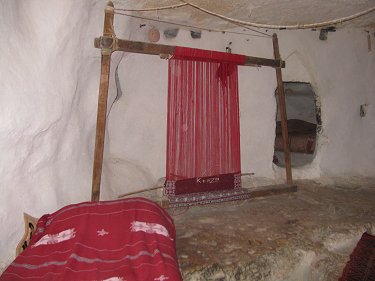 |
Inside the mountain of Chénini, a room for sleeping and working to the frame. |
|||
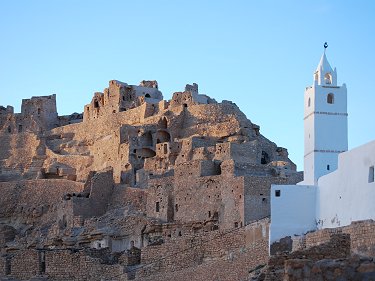 |
The white mosque of Chénini at the sunset, against the brown of the houses and of the rocks of the hill.
|
|||
 |
friday 14th february 2014
|
|||
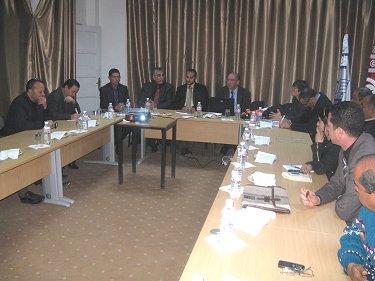 |
Following, the meeting with the economic reality of Tataouine at the Regional Association of industrial, commercial and artisanal companies (UTICA), in the presence of its President. |
|||
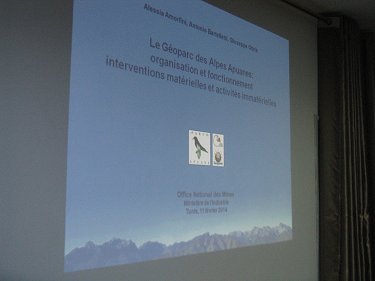 |
On the occasion, the director Antonio Bartelletti held in French a short lecture on the theme: "Le Géoparc des Alpes Apuanes: organisation et fonctionnement - interventions matérielles et activités immatérielles".
|
|||
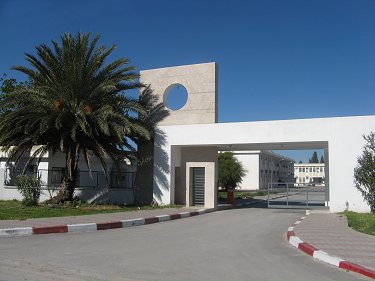 |
saturday 15th february 2014
|
|||
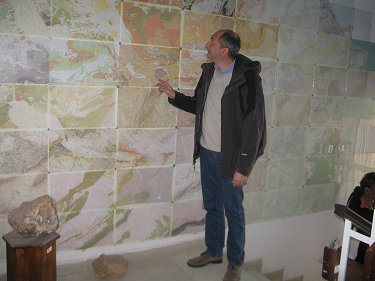 |
During a work break, the ONM officials showed their laboratories and the latest geological maps of Tunisia.
|
|||
 |
Also the Geological Museum of the ONM has been the object of a brief visit.
|
|||
|
|
 |
A beautiful specimen of palm tree fossil of Paleogene remembers, in the limestone, an immutable trait of the Tunisian landscape.
|
||
|
|
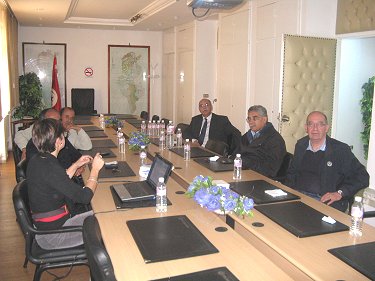 |
sunday 16th february 2014
|
||
|
|
||||
|
|
||||
